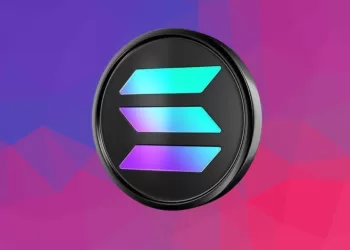- SBI’s 2017 projection of full XRP adoption by Japanese banks remains far from realization in 2024.
- Only eight regional Japanese banks have integrated Ripple’s MoneyTap app, a slower adoption rate than envisioned.
- Japan’s major banks are gravitating toward stablecoin solutions over XRP for large-scale payment systems.
Discussions have recently revived SBI’s CEO Yoshitaka Kitao’s five years old prediction of each of the Japanese banks to adopt Ripple’s XRP for cross-border payment. But if one looks deeper, one can find where this claim came from: the document that SBI prepared in 2017 on the application of Ripple technology by the company. Although there has been some adoption of XRP seen over the last year, this is still a long way from the above described reality.
A 2017 Vision Misinterpreted and Japan’s Banking Giants
This entailed a statement that “every Japanese bank will use XRP” was based on what SBI presented in a PowerPoint presentation in November last year of a plan to implement a hybrid remittance system using Ripple’s XRP Ledger and Interledger Protocol (ILP). Although unachievable in the short-run, this strategic vision represented a long-term goal rather than a strategy. By the year 2019, this SBI introduced the MoneyTap app, it uses Ripple technology for remittance purposes. At the moment, only eight regional banks in Japan are MoneyTap partners, which means that mass use is still a distant goal.
Most evidently, Japan’s three biggest banking giants – MUFG, SMBC, and Mizuho – are developing payment systems that are based on stablecoins and not on XRP. This development best captures the dynamics within the Japanese market where the Ripple is struggling to penetrate the big markets with its predominant technology.
While Ripple has made some progress, the cryptocurrency has not yet broken through the barriers of utilization. In a recent statement, the SBI Chief Executive Officer Yoshitaka Kitao pointed to “real demand” for XRP for cross-border remittance services. Various financial institutions including Santander have piloted Ripple’s blockchain solutions which aspect of XRP demonstrates the effectiveness of a reduced cost and more efficient time in executing cross border payments.
The 2025 Osaka Expo: A Potential Catalyst
Kitao envisioning XRP usage at the Osaka Expo 2025 also points to long-term goals of Ripple. Before the World Expo happens, Ripple and SBI may scale up their campaigns on how the XRP cryptocurrency can benefit the financial world.
XRP adoption in Japan might be helpful for Ripple to realize its visions, but it seems that claims for XRP’s use in every corner of Japan are too weak at the moment to prove the technology’s effectiveness. Ripple’s experience is more of an accretion within certain financial procedures over time. Moving forward the industry will continue to focus on its three main pillars: trust, utility, and regulation, for significant use.














